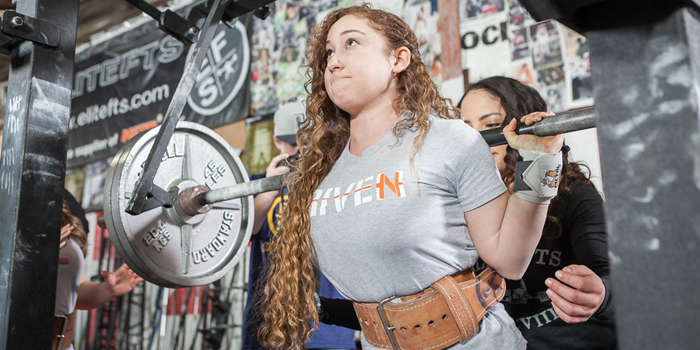
When it comes to all things training and nutrition, there are a lot of articles on the inter-webs covering the many subtopics that encompass these fields. Google makes it pretty easy to access most of this information, as most topics are never really more than a click away. Furthermore, most of the non-academic articles are free (open access).
This can be a good thing, as it means that there is a lot of information available to people wanting to learn. However, there is also a downside. This means there is a lot of information floating around out there from people who “just know.” As elitefts readers, I’m going to assume you’re searching for more knowledge. You know our motto of “live, learn, and pass on.” As such, I feel like I have to let you know that not all free articles are “right.” Sometimes they are just opinions, and nothing more. Sure, someone could write something that sounds convincing and then list references, but that doesn’t always mean they are giving you good information. It’s hard to know if the information you are getting is good or not if you can’t go back and look into those references yourself.
RELATED: The Meathead’s Guide to Passing the CISSN Exam
That’s why it’s nice to have a skill set that lets you investigate if the actual science supports what an article is telling you (or sometimes selling you). It’s important to double check that the references linked to articles are appropriate and discover if there is contradicting scientific evidence out there. Honestly, the only real way to distinguish the Kool-Aid from the good stuff is to examine supporting scientific evidence.
So for those people wanting to learn more, but are not familiar with how to navigate peer-reviewed scientific-articles, I decided to put together this meathead’s guide to reading science papers. I guess you could say I’m a bit tired of articles guru-ing and BS-ing. After all, the more people calling out incorrect uses of references and sharing well-compiled articles, the better shot we have at preventing the growth of new fitness and nutrition myths.
Not All Scientific Articles Are the Same: Types of Peer-Reviewed Scientific Articles
There are two types of peer-reviewed scientific articles (more or less): research articles and reviews. Peer-reviewed is a fancy way of saying that a bunch of scientists, not part of the group publishing the paper, have double checked that the paper meets good scientific standards. It’s more or less a quality control checkpoint before the science gets published. Think of it as judges at a powerlifting meet approving you broke parallel before giving you three white lights on a squat.
In research articles, the authors use experiments, data collection, and analysis to answer specific questions. In review articles, authors compile current knowledge from research articles in the field and provide a snapshot summary of the science, in that specific area, at that moment in time. For example, let’s say you were interested in the idea of muscle hyperplasia and investigating if it is even possible. You might want to start out with a review on the topic and get an idea of what’s been published and what hyperplasia is. Then once you have an understanding of the topic, you would dive into some research articles. By approaching your science reading this way, you will get a big picture idea of what is known about hyperplasia and will be better prepared to understand the premise of the questions authors ask about hyperplasia in research articles. For the rest of the article, I’ll focus on how to read research articles.
How to Start: Abstracts and an Open Web Browser
The abstract of a paper is kind of like a movie trailer: it’s a shortened version of what the paper is looking into, what is awesome about the paper, what are the most important findings of the paper, and what the authors’ conclusions are (more or less). A lot of people will tell you to start with the introduction, but I don’t really agree. Why? Because this is your opportunity to see if any key concepts or words are foreign to you. If so, open your Google browser and start looking up (and writing down) what these words or concepts are. I really think this can be helpful, since it is hard to navigate scientific articles if you don’t understand frequently used words, genes, proteins, techniques, concepts, etc. In muscle research, this can be very important to do since non-meathead researchers tend to use complicated words for muscle-related stuff.

Additionally, there tends to be a lot of papers out there using mouse models, so some of the terms for what you do in the weight room to get jacked differ from what the mice do in the lab to get jacked. For example, if you want to study hypertrophy in a mouse, a common model to use would include hind limb synergistic ablation. If you didn’t know, that is just a fancy way of saying that someone surgically removed the soleus and the gastrocnemius of the mouse so that the remaining plantaris could grow in response to the load of the mouse that it now carries. If you didn’t know that term, you might have no way of knowing that paper was focusing on the effects of overload-induced muscle growth. So, don’t miss the gems, read through the abstract, and look up all the things you don’t know before starting.
Read the Methods
I know, you thought I was going to tell you to read the introduction next. But the truth is, sometimes introductions can be crafted to set you up to believe what the authors want you to believe. It’s important when reading anything, scientific or not, to take things for what they are. It’s important, especially in scientific papers, to look at the data presented and not the write-up. That’s why you have to read the methods next. It’s super important to understand the types of experiments being performed and to look up any ones you have never heard of. The point of reading the methods for us meatheads isn’t to understand every distinct detail, but rather to make sure you know why an experiment is used and what information it gives. This is key to understanding the results of a scientific paper.
For example, let’s say Protein X is the next greatest pro-hypertrophic protein to be secreted from exercised muscle. If that is the case, things like western blots can be used to look at the expression of Protein X in muscles undergoing different types of exercise stimuli. On the other hand, if they did a technique called semi-quantitative PCR (qPCR), they would be measuring the expression of Gene X, which later codes for that Protein X. So imagine Figure 4 shows you that by qPCR there is the same amount of X expression, and by western blot there is more of X in powerlifters than runners. From this, you can conclude that powerlifting, compared to running, is better at increasing the amount of Protein X. See, I’m not kidding — understanding the methods really matters.
Read the Introduction
Okay, the introduction is the place where authors set the premise for the paper you are about to read. It is the section that gives you an idea of previous research in the field, as well as the authors’ hypothesis in a broad sense. If you have followed the steps above, the introduction should not seem foreign to you, since you should have already Google searched the abstract words you didn’t know and perhaps read a review if the topic was new to you. If you still are unfamiliar with things, I suggest you keep looking them up. Since the intro sets the premise for the experiments they did, reading it before going into the results sets you up for a nice way to understand what and why certain experiments were done, and how the authors generated their hypothesis about the scientific question they are asking. Imagine we go back to the example of Protein X. In the introduction, they might talk about pro-hypertrophic proteins that get secreted by muscle, talk about how secreted proteins from exercised muscle could be used as new biomarkers for muscle growth, and talk about some background on Protein X. Thus, if you read the introduction right before the results, you will have a good understanding of what’s being talked about in the paper and the questions the authors are trying to answer experimentally.
Read the Results, But Start with the Pictures
The results section includes summarized data from all experiments performed and often visually depicts them as table or figures (pictures). Figures usually contain things like graphs and images. When you read the results section, start with the figures and make a note of what they tell you. Then go back and read how the authors explain their findings. This will help you minimize bias while interpreting results. It might take more time, but I promise it’s worth it.
Conclusions Sum It Up, References Serve You More
The discussion and conclusions section is the place where the authors summarize their data and talk about future directions. Here, they go into more depth about the meaning of their data. It’s the 10,000-foot view of their findings, and it should be super digestible compared to the intricate view presented in the results section. So with the Protein X example, in the discussion, they might talk about how measuring it might serve as a good biomarker for hypertrophy, and how it might be able to be used in the future as a new drug for inducing muscle growth. When you read this section, ask yourself if you had the same conclusions. In the conclusions, it is also a great place to get an idea of the authors’ future scientific directions and the questions they want to answer next. Sadly, just like this article (kidding), it is the ending point. But, if you’re hungry for more knowledge, you can always search through the reference section for more peer-reviewed articles to read!











"teach me how to read" all over again. Slowly, (I am blonde) I got what he meant. Thanks for writing this!
Keep up the great work!